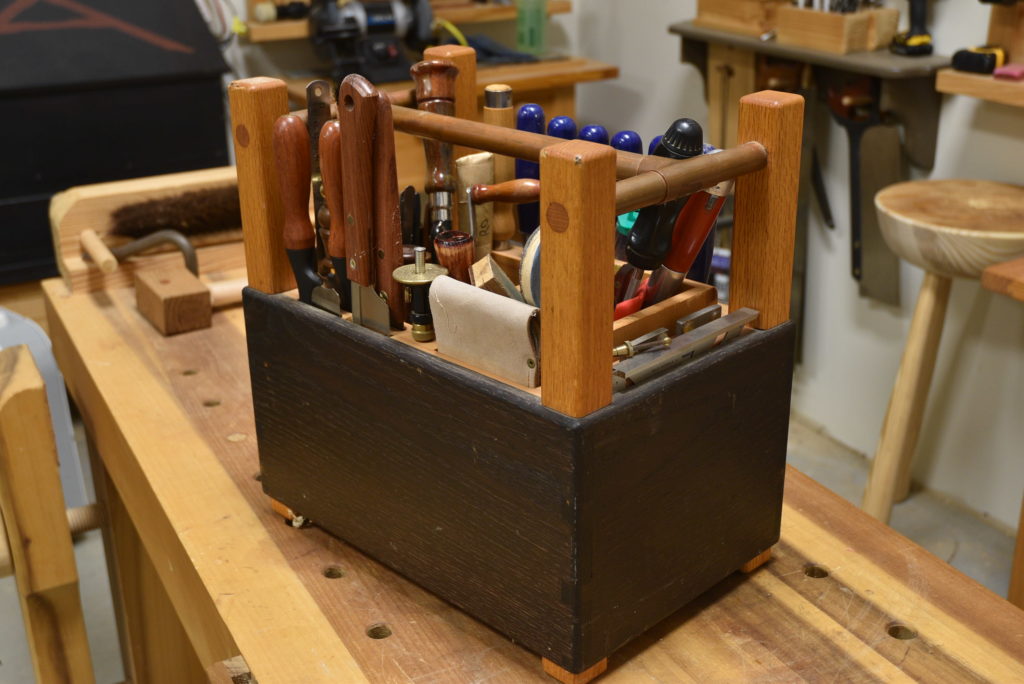We may receive a commission when you use our affiliate links. However, this does not impact our recommendations.
 I don’t like tool chests. There, I said it. Let’s see if I’m struck down by lightning from the woodworking gods. I’ve bought them in the past, built them, understand their logic. Protection from thieves, protection from moisture, protection from metal cancer. But there is something to the concept of “out of sight out of mind.”
I don’t like tool chests. There, I said it. Let’s see if I’m struck down by lightning from the woodworking gods. I’ve bought them in the past, built them, understand their logic. Protection from thieves, protection from moisture, protection from metal cancer. But there is something to the concept of “out of sight out of mind.”
Besides, the only time I’ve had tools stolen was when burglars walked off with… my tool chest. And here at the boundary of a semi-arid region of Texas, the only tool that’s ever rusted on me was one particular Japanese saw that I always thought wanted to die anyway.
William Morris has a very overused quote, “Have nothing in your house that you do not know to be useful, or believe to be beautiful.” Hence I’ve always preferred hanging tools on the walls. I can find them easier and appreciate their potential more. I’ve also found that these racks help me pare down my tools to only those I use and appreciate because if I don’t use them they end up in a drawer or… a chest.
 This mentality also explains my preference for open totes for transporting tools. Totes range in styles from the tool box Roy Underhill carries at the opening of his show to simple paint buckets. What I like about them is their easy construction, efficient use of space and customization potential. And I can find my $!@# easier.
This mentality also explains my preference for open totes for transporting tools. Totes range in styles from the tool box Roy Underhill carries at the opening of his show to simple paint buckets. What I like about them is their easy construction, efficient use of space and customization potential. And I can find my $!@# easier.
I use one I built about seven years ago. The handles cantilever off the interior substructure, which is held together with interlocking joints wrapped in a dovetail shell. It was designed to hold all my original tools. Now it’s my grab-and-go demonstrator box. It has everything I need to make layouts, cut joinery, plane boards, and sharpen everything inside. And it’s the size of only two shoe boxes, which makes it easy to plop on the bench when it’s time to work. Everything is easy to find and easy to return.
I’m about to build a new demonstrator tote. Something to show off all the skills developed since the last, hold my current favorite tools and also the necessities to keep them maintained. It’s a wonderful design challenge, as an open tote lets you maximize every square inch because access to the tools is not the issue.
Open tote tool boxes. I haven’t a clue why they aren’t more popular.
Here are some supplies and tools we find essential in our everyday work around the shop. We may receive a commission from sales referred by our links; however, we have carefully selected these products for their usefulness and quality.









What is the handle made of? The end joints look like copper “T” plumbing fittings… Copper tubing/fittings filled with wooden doweling?
I too would like to see how your tote is put together; it’s a great idea!
Nice idea. Does the top of that tote come off so it can be used as a stool? Because it looks anyway, like the legs and cross pieces of a step stool. Just wondering.
Interesting point. It’d be stronger if you sketched the layout of that demonstration tote, so we could see how you’ve used the space. Closed boxes do have the advantage of having more walls and a top that toolholders can be mounted to and/or that keep excess stuff from spilling out; you’ve lost that but gained access and kept yourself honest about really having a place for everything.